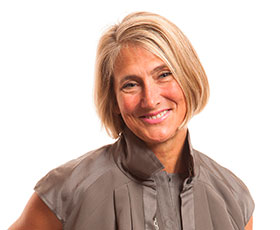
In 1975 UNC-CH awarded the first Morehead-Cain scholarships to women. Among the first female recipients was Katie Ziglar ’79, who agreed it was “high time” the university accepted women into the prestigious program. Ziglar fell in love with history and art as an undergraduate at Carolina—especially after taking courses in Japanese history with Miles Fletcher and in Islamic Art. Her career has taken her full circle, from an undergraduate at UNC-CH, to studying Islamic Art in Cairo, working at the National Gallery in Washington D.C., then on to the Smithsonian’s American Art Museum, the Clark Institute, the Freer and Sackler Gallery, and finally back to Carolina to take the helm of the Ackland Art Musuem. Ziglar’s career has been a whirlwind of exciting opportunities and commitment to public engagement fueled by a deep love of history she cultivated at Carolina.
When Ziglar came to UNC-CH as an undergraduate she recalled, “I had always loved history, so it was an easy choice” to major in history, especially since “we had a great department, and still do.” She remembers warmly a diversity of courses, including German history with Lamar Cecil. Her courses in Japanese History and Islamic Art inspired her to think about history from a non-western perspective. Ziglar was intrigued and found it incredibly rewarding to study “where east and west meet each other.” One of the things she loves about history is how “it combines a lot of different fields of knowledge.” Ziglar’s career is indicative of multiple influences and interests converging in history and art.
After a brief stint as a paralegal, which “cured” her from pursuing a career in law, Ziglar made the move to Egypt to study Islamic Art and Architecture at the American University in Cairo. “It was both exhilarating and challenging,” Ziglar said as she recounted donkeys pulling carts filled with fresh mounds of mint and stuffed grape leaves. Upon returning to the U.S., Ziglar learned that the National Gallery in Washington D.C. was doing an exhibit on Suleiman the Magnificent and needed someone in the press office who knew about the history of the Ottomans. Ziglar, with her training in history and art history at UNC, as well as in Cairo, jumped at the opportunity to pursue her love of art and history together. After more than six years, Ziglar moved on to the American Art Museum. where she really immersed herself in American art, drawing on her training in American history at UNC-CH.
In one of her next moves Ziglar became Executive Director of External Affairs for the Freer and Sackler Gallery, where she was excited to be a part of an institution that “specializes in Asian art from Istanbul to Tokyo.” During her 13-year tenure at the Freer and Sackler, the gallery put on exhibits ranging from Islamic Spain to archaeology in Saudi Arabia. Ziglar enjoyed the opportunities for travel, collaboration, and the historical art of “putting the pieces together of parts of the past.”
When the Director’s position at the Ackland opened up Ziglar said, “I never thought I would get the job.” It had been years since she’d been on the job market and she thought of this as an opportunity to practice. What started as a practice run for Ziglar turned into a new position as Director of the Ackland. Since starting this July, Ziglar has kept herself extremely busy, getting to know the people, culture, and politics at UNC-CH. She has met individually with every employee at the Ackland so that she can “understand not only what they do, but the challenges they face, and really come to know the culture of the Ackland.” That commitment to understanding people, place, and culture seems to come naturally to Ziglar who, deservedly so, is quite proud of the Ackland’s engagement with students.
Ziglar is hopeful that the Ackland can expand its influence and offerings to the university community. She says that it feels good to be back at UNC-CH. While the Department of History has changed since she was a student in the 70’s, Ziglar is looking forward to making new connections and “just wish[es] I had time to go to class once in a while, I’m very jealous.” One aspect of her work with art history that Ziglar especially appreciates is that, “like history, it involves many other disciplines” which encourages collaboration and diverse approaches—part of what brought Ziglar to history in the first place.
Ziglar parted with some words of wisdom for current history students, imploring undergraduates and graduate students alike “to not worry too much about career paths. If you’re bright, and committed, and hardworking, and have a little luck along the way you’ll end up doing just fine.” Indeed, Ziglar’s career is a testament to the rewards of the unexpected and the fascinating opportunities open to historians.
–Danielle Balderas
